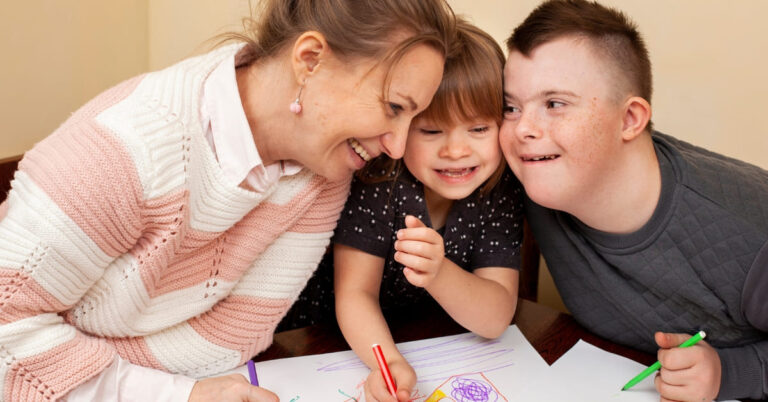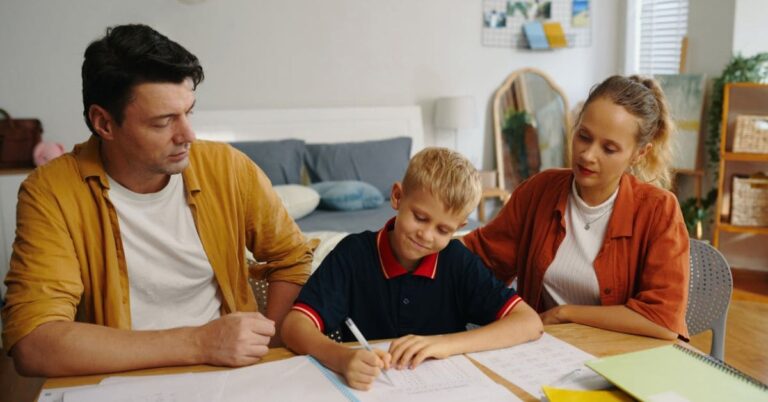In the intricate world of autism therapy, parents and caregivers often find themselves grappling with a fundamental question: How many hours of Applied Behavior Analysis (ABA) therapy per week are optimal for their child?
This inquiry is by no means a simple one-size-fits-all matter; it’s a nuanced challenge that depends on various factors.
In the quest for providing the best support for children with autism, it becomes paramount to understand not only the recommended hours of ABA therapy but also when it’s appropriate to stop, how to navigate therapist changes, and most importantly, the promising signs of progress.
Let’s embark on a journey through the landscape of ABA therapy, explore these crucial aspects, and unearth the keys to unlocking the potential of every child with autism.
Recommended Hours of ABA Therapy
Understanding the optimal number of hours for Applied Behavior Analysis (ABA) therapy is an essential cornerstone in the journey of helping children with autism reach their full potential.
The Autism Society of America emphasizes the importance of individualized treatment plans tailored to each child’s unique needs and circumstances. There is no one-size-fits-all answer when it comes to ABA therapy hours.
They highlight that factors like the child’s age, the severity of their autism, and the specific goals set for therapy play pivotal roles in determining the appropriate number of hours per week.
Federal authorities, including the Centers for Disease Control and Prevention (CDC) and the National Institute of Child Health and Human Development (NICHD), offer valuable insights into autism therapy.
These agencies stress the significance of early intervention and recommend that children with autism should receive a minimum of 25 to 40 hours of ABA therapy per week. However, they also stress the importance of individualization and that these numbers can vary based on individual needs.
When to Consider Stopping ABA Therapy?
Navigating the course of ABA therapy for a child with autism involves not only knowing when to start but also when to consider stopping.
The decision to conclude ABA therapy is a significant milestone that should be carefully evaluated. Here are some key considerations:
- Achieving Treatment Goals: One critical indicator is the extent to which the child has met their treatment goals and objectives. These goals can range from improving communication skills to reducing problematic behaviors.
- Reevaluating Progress: Regular progress assessments are vital. If it becomes apparent that the child has made substantial gains and their needs have evolved, it might be time to reevaluate the necessity of ongoing ABA therapy.
- Transitioning to Other Interventions: The decision to stop ABA therapy may also coincide with transitioning the child to other educational or therapeutic settings, such as schools that offer specialized support for children with autism.
Changing Your ABA Therapist
A strong and supportive psychotherapist-child relationship is at the heart of ABA therapy. However, there may be circumstances where changing therapists becomes necessary. Here’s what to consider:
- Lack of Progress or Plateau: If the child’s progress plateaus or they are not making the expected strides, it may indicate the need for a fresh perspective and therapeutic approach.
- Communication Issues: Effective communication between the therapist and the child’s family is essential. If communication breaks down or conflicts arise that hinder progress, it might be time to explore alternative therapist options. It means child needs speech therapy to improve his communication.
- Therapist’s Qualifications: Regularly assessing the qualifications and training of the therapist is vital. If the therapist’s skills or expertise are not aligned with the child’s needs, it may be time to seek a better match
Signs of Improvement in ABA Therapy
Recognizing signs of progress is a heartwarming aspect of the ABA therapy journey. As a parent or caregiver, it’s essential to be vigilant and celebrate these promising signs:
- Improved Communication and Social Skills: Watch for enhanced communication abilities, including verbal and non-verbal forms. Progress in social interactions, such as making friends or engaging in conversations, is a positive indicator. One effective way to support social development is through summer camps organized by ABA (Applied Behavior Analysis) therapists. These specialized summer camps are designed to create a supportive environment where children with autism can practice and develop their social skills.
- Reduced Problematic Behaviors: A decrease in challenging behaviors, such as tantrums, self-injury, or aggression, is a strong sign of improvement.
- Enhanced Independence and Self-Regulation: As children become more independent in daily tasks and demonstrate self-regulation skills, it’s a clear sign of progress toward greater autonomy.
These signs serve as beacons of hope, offering encouragement to families and therapists alike. In the upcoming sections of this article, we’ll explore these crucial aspects in greater detail, shedding light on the intricate process of ABA therapy for children with autism.
Conclusion
In the ever-evolving landscape of autism therapy, the question of “How many hours of ABA therapy?” often leads to a deeper exploration of what it means to support and nurture the potential of children on the autism spectrum.
As we conclude our journey through this intricate topic, it becomes clear that there is no one-size-fits-all answer.
Recognizing signs of improvement, knowing when to consider stopping therapy, and understanding when to change therapists all underscore the importance of active involvement and communication within the therapeutic journey.
At Mind Grove Therapy, we champion this philosophy. We offer not just ABA therapy but also a promise to nurture the incredible potential that resides within each child.
Our dedicated team, in the pursuit of excellence, walks this path hand in hand with families. Together, we are not only shaping the future but also unlocking the remarkable promise within every child.




